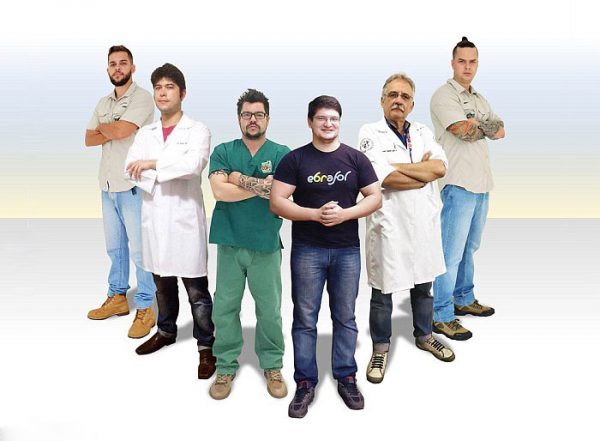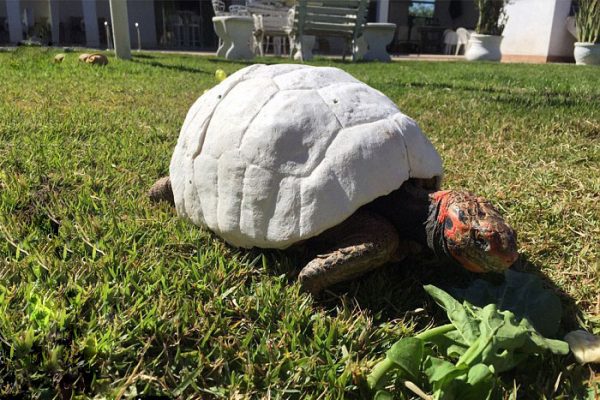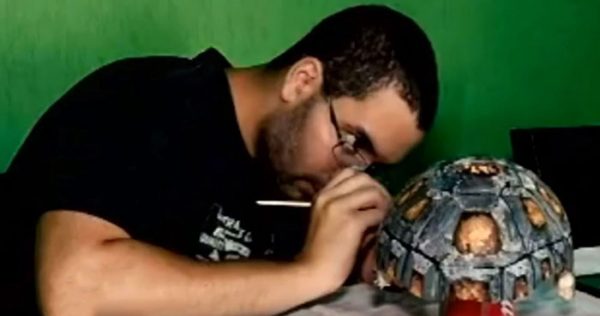Animal Avengers Create A 3D Printed Shell to Save a Burnt Tortoise
A forest fire in São Paulo, Brazil caused a tortoise to lose most of its shell. It was found by a couple who were friends with a veterinarian who brought it to his office.
Dr. Rodrigo Rabello adopted the animal and before he became aware of the animal’s gender, named her Fred after Freddy Krueger, from the Nightmare on Elm Street movies because she looked so horrible without a shell. Not only was her shell damaged it was almost completely gone.

With his associates from the “Animal Avengers”, a small group of people who have joined together to help wild animals in Brazil, a replacement shell was created with a 3D printer and has given the tortoise a new lease on life.
G1.globe.com, the Brazilian website Fantastic, tells us Dr. Rabello took a set of forty photos of Fred from all angles and about as many of a healthy tortoise.
He sent the information along with precise measurements to graphic designer Cicero Moraes in Mato Grosso, Brazil who fed the information into a computer and designed a new shell in several parts.

That data was sent to Dr. Paulo Miamoto, a dental surgeon from Santos, Brazil who used his 3D printer to create the virtually unbreakable shell pieces from a plastic made with corn.
As only one piece took over fifty hours to print, the process took about a week. After it was cleaned up, they took the new shell and Fred to Dr. Roberto Fecchio’s animal hospital where surgery was performed to attach the prosthesis. It was attached to what was left of her original shell and fit perfectly.
The last step was to have the bright white shell painted in a durable but animal friendly paint by Brazilian artist Yuri Caldera so Fred would look just the way she did before the fire.
The entire process took about three months during which Fred suffered a bout of pneumonia and didn’t eat for over a month but now she is healthy and roams around Dr. Rabello’s property like she owns the place, which she probably will considering the life span of her species is from eighty to one hundred and twenty years.

According to scholastic.com, Yale University scientist, Tyler Lyson claims that Testudinidae shells, the family from which turtles and tortoises come, develop from bone and have more than fifty small separate bones held together by plates of keratin – the same matter that makes up our fingernails.
Those bones fuse with the spine and ribs and it is very painful for the animal if the shell is broken in any way. If Fred had not had a timely rescue she could never have survived.
Other animals have been helped by new technology including Buttercup the duck who was fitted with a new 3D printed leg. He was hatched as a school biology project in 2012 but his left foot was badly deformed.
The class worked with him to help him overcome the deformity but were unsuccessful.
Feathered Angels Waterfowl Sanctuary in Arlington, Tennessee took Buttercup and decided to amputate his foot. The sanctuary had a foot designed and created using a 3D printer to make a mold and made the prosthesis with flexible silicone that fit Buttercup well but only when he walked.
He was unable to swim properly which sent the people at the sanctuary back to rethink the design. They came up with a foot that allows water to pass through the front but if he kicks backward it closes to give him the ability to push himself through the water.
To Be Honoured: WW2 Bone Collector Who Was a Vital Contribution To The Allies
On the video at 3dprint.com, at first, he didn’t quite know what to do with it but he only took a few minutes to become acclimated and starting using the foot almost as well as his own.





